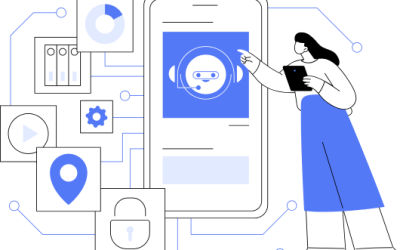Customer relationship management is a process for businesses to manage and interact with prospects and customers. Most people in the business refer to it as CRM, and, even more commonly, refer to the software they are using to manage their customer data. There are many reasons that a business decides to use a CRM application including:
- Track prospect and client opportunities and referrals.
- Communicate automatically to prospects and clients.
- Create preset targets for marketing campaigns.
- Set actions for every contact to make follow-up easy.
- Deliver messages to social media channels based on your contacts’ social media profiles.
- Reduce Follow Up Fatigue.
In a nutshell, the goal of a CRM application is to sell more and nurture customer relationships with less effort. For this to happen, the CRM must be configured properly to align with your business’s goals and sales funnel, but what happens if it is not configured correctly? Will it make a difference? The answer is yes.
Let’s look at a real-life example of a misconfigured CRM.
Recently, we talked with the owner of an HVAC company. The owner employs three customer service representatives who handle scheduling, invoicing, and customer service. He also employs 4 technicians and 3 tech assistants who are in the field doing installations and repair calls. The owner installed a CRM and migrated his customer data into the CRM by himself. He told his team about the CRM and gave them logins, but he did not show them how to use it. He, however, wanted to use the CRM right away to send out automated messages based on the following:
- Elite member maintenance renewal reminders
- Appointment reminders
- Promotions
- Follow up on open estimates
- Request for review after a completed
After he set up the messages, he activated the automation. Only the Appointment Reminder worked correctly. The Promotions email went to the wrong people and none of the other automation worked as each was missing key components needed to automate the owner’s great ideas. The owner was frustrated and realized he needed help.
Unfortunately, some clients who requested service calls got hit with big charges because they did not renew their service contracts. The clients did not know their contract had expired and the Elite member renewal reminder was never sent.
The Elite members did not get their renewal reminders because the owner set up the wrong business conditions which needed to be based on beginning and end dates. Sady, he learned about this during a maintenance call when his technician called him based on the irate client’s feedback. He, of course, told his technician to give the long-standing member a discount and renew the membership for free. He realized the misconfigured automation caused him to lose money on the repair as well as raise doubt in the customer’s mind.
The owner also noticed that promotions were going to everyone! This produced unhappy customers who had just bought a new HVAC system a few months earlier and did not receive the promotional discount. The customers called his office asking why they did not get this promotion when they had recently purchased a new system from his company. Again, he was made to look bad and his reputation was hurt. He told his service representatives to credit or refund the difference to anyone that called. Unfortunately, he did not segment his data correctly and, as a result, it caused him to lose money again.
How can a misconfigured CRM be avoided?
The owner ended up reaching out to a CRM consultant to help him fix his misconfigurations to prevent angry customers and a loss in profit. This involved backstepping with the consultant which took time and money, but, in the end, he was able to rebuild trust with customers and use the CRM effectively. This could have been avoided by doing the following before the implementation:
- Recognize that a CRM implementation is more than clicking the “install” button.
- Work with a CRM implementation consulting team that can:
- Help identity important business goals and configure the CRM based on those goals to be scalable for growth
- Set up the automation to eliminate repetitive manual emails and tasks
- Segment the contacts for email and text campaigns using dynamic lists
- Prepare customer and prospect data for migration to capture relevant information including industry and lead sources, for example.
- Train the owner and his team so they are ready to use it on day one
- Set up an ongoing support agreement with the CRM implementation team
Conclusion
CRM is a powerful tool that can help businesses grow, strengthen their reputation, and sell more with less effort. This tool can also hurt a business if it is not configured properly. It can damage the reputation, cause customers to leave, and increase Follow Up Fatigue. If you are not using a CRM and would like to learn how a properly configured CRM can help you, contact us to schedule a demo of X2CRM. As an X2CRM Partner, CCC delivers powerful tools, configured based on your business goals, and trains you on how to use X2CRM, so you are ready to go full speed on day one.





